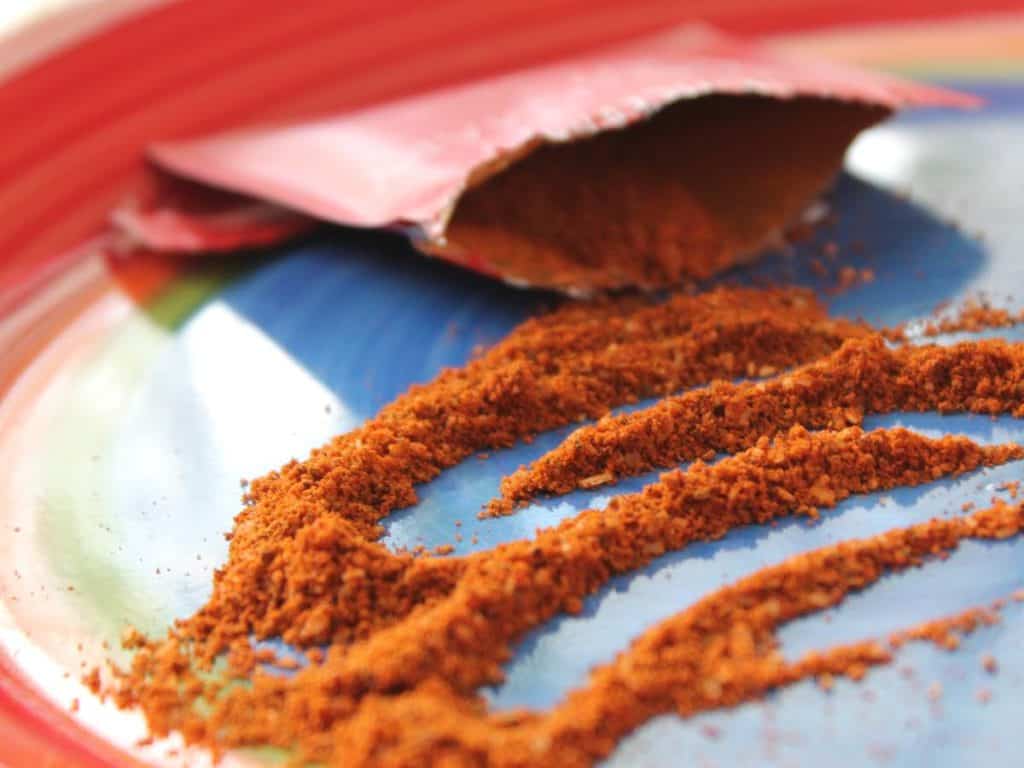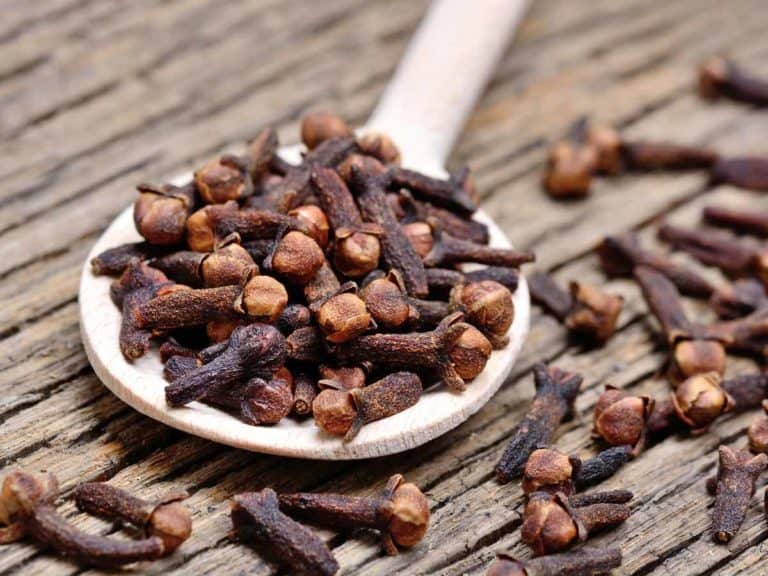Accent Seasoning: Use, Best Brands, Alternatives, etc.
If you’re into cooking, you may have seen a recipe call for accent seasoning at one point or another. With its generic name and no other information, it’s hard to tell what accent seasoning would even taste like.
So what exactly is accent seasoning anyway?
Accent seasoning is a spice blend that contains monosodium glutamate, or MSG, as its main ingredient. MSG is a flavor enhancer that increases the flavor of savory foods and makes them taste better by affecting flavor receptors on the tongue.
There has been a lot of misinformation about MSG over the past several decades, which is one of the reasons it has been somewhat rebranded as accent seasoning instead. Keep reading to learn about accent seasoning and why MSG isn’t as scary as you might have thought it was.

What Is Accent Seasoning Made Of?
The primary ingredient in accent seasoning that affects its flavor is monosodium glutamate, or MSG. This mixture of water, sodium, and glutamate is a type of salt that binds to the flavor receptors on the tongue and makes savory foods taste meatier. It’s a popular addition to savory dishes, especially in Asian cuisines.
Accent seasoning is MSG with the following additional spices added:
- Chili powder
- Salt
- Oregano
- Cumin
- Paprika
- Onion powder
- Garlic powder
Accent seasoning can be purchased commercially in the spices and seasonings section of the grocery store, but if you have MSG and the above seasonings on hand, you can mix up your own homemade version to taste, too.
Does MSG Occur Naturally in Food?
Even though MSG has a reputation as a chemical additive, this aspect of accent seasoning shows up organically in several types of food.
Here are just a few of the foods where MSG can be found naturally:
- Cheese
- Tomatoes
- Anchovies
- Cured pork
- Shellfish
- Walnuts
MSG is one of the reasons why these food items generally have a savory flavor and a reputation for acting as a flavor enhancer to other cooking ingredients. For this reason, the above foods that are high in MSG are used as “flavor bombs” to help dramatically improve the taste of other foods.
Even though the flavor elements of MSG have been around naturally in foods for hundreds of years, commercial MSG as we know it in accent seasoning was not invented until the 20th century. A Japanese chemist named Kikunae Ikeda invented the seasoning in 1908 in an attempt to reproduce the savory flavors of his wife’s dashi seaweed broth.
After its invention, Ikeda began mass-producing his discovery under the name ajinomoto, or “essence of taste.” Across Japan and the rest of Asia, MSG became a famous additive for increasing the savory flavor of what might otherwise be considered bland dishes. When it first arrived, MSG was also a popular seasoning in Asia because it was seen as a booster for nutritional foods.
After MSG’s reputation dive in the 1960s and 1970s following reported misinformation to the New England Journal of Medicine, the seasoning was generally rebranded as “accent seasoning” with a few other select spices added to it to differentiate it from pure MSG.
Accent seasoning showed up in American grocery stores in the 1940s, with most home cooks unaware that it was simply MSG under another name. After MSG’s reputation hit, however, most MSG brands were shifted into “accent seasonings” by adding additional spices. This allowed people to continue using MSG without associating it with anything negative.
How to Cook with Accent Seasoning
Accent seasoning can be used in cooking similarly to how many other dried herbs and spices are used. Rather than being sprinkled raw on top of foods like salt, accent seasoning is typically sprinkled into or stirred into food during the cooking process and combined with sauces, soups, and other seasonings.
Accent seasoning works best on savory foods like meats, roasted vegetables, poultry, potatoes, rice, salads, and casseroles.
How Much Accent Seasoning Is Needed?
Accent seasoning should be added in proportions of around 1/2 teaspoon of seasoning for every four to six servings of food. Keep in mind that accent seasoning is highly concentrated, so you don’t need very much of it at all to enhance the flavor of your food.
This is our recommended seasoning (on Amazon):

What Happens When You Use Too Much Accent Seasoning?
Generally, MSG and accent seasoning are used to improve the flavor of food. If you use too much of it, it can cause your food to taste metallic as well as more processed, giving it a chemical flavor. However, when used in correct amounts, it’s one of the best savory flavor enhancers around.
What Does Accent Seasoning Taste Like?
Accent seasoning is a savory seasoning, and other than the umami flavor enhancement of the MSG, the other flavors present in accent seasoning depend on what mix of other spices are included.
Traditionally, accent seasoning incorporates flavors of chili peppers, garlic, paprika, and cumin, but homemade accent seasoning can be made with any combination of savory seasonings you want.
What Does Accent Seasoning Look Like?
Accent seasoning is a mixture of MSG and several other seasonings, so it looks like a fine white powder combined with red and black ground spices. By itself, MSG has an appearance similar to meat tenderizer or very fine powdered salt.
Accent Seasoning vs. Salt
One of the significant advantages of using accent seasoning rather than salt is that accent seasoning and MSG can add a lot of the same flavor enrichment that is associated with salt without the associated adverse health impacts. Excessive salt intake is linked with several serious chronic health conditions, including heart attack and stroke.
The main reason that people use salt in food is to help improve the food’s natural flavor. Accent seasoning can accomplish this same goal without increasing a person’s daily sodium intake. While the flavor of accent seasoning isn’t exactly like salt, it is close enough in application that it makes a great substitute.
Is Accent Seasoning High in Salt?
Even though the basis for accent seasoning’s flavor is the monosodium it contains, accent seasoning is able to achieve a salty umami flavor with only a fraction of the sodium contained in regular household salt. On average, accent seasoning only has around sixty percent of the sodium contained in table salt.
Is Accent Seasoning Kosher?
There’s good news for those home cooks who are trying to keep a kosher table when it comes to using accent seasoning and MSG. While not all MSG is labeled as kosher, many sources of MSG are kosher, and the commercial version of accent seasoning is labeled as kosher.
MSG can also be derived naturally, so even though it has a reputation as processed food, it can be a healthy flavor enhancer if you buy it from a reputable source.
Are Other Spices Healthier Than Accent Seasoning?
Accent seasoning is recognized as “generally safe” by the Food and Drug Administration (FDA), but are there other spices that are even healthier than accent seasoning?
The answer is yes. While accent seasoning is a great way to add savory flavor to your dishes, using fresh herbs and freshly ground spices like sage, turmeric, and mint is considered a little bit healthier than using processed seasoning like accent seasoning. Here are a few of the reasons why:
- Polyphenols: If you cook with fresh chopped herbs rather than dried seasonings and spices, many more nutrients and essential vitamins are available. Cooking with fresh herbs gives you the nutritional benefits of both spices and vegetables.
- Less sodium: Even though accent seasoning has less sodium than traditional table salt, using other spices and seasonings instead of accent seasoning eliminates sodium intake entirely. Since many people routinely eat more sodium than is considered healthy, this makes eating sodium-free seasonings generally healthier.
- Medicinal value: Certain spices that aren’t included in accent seasoning, such as turmeric and ginger, offer positive medicinal impacts along with a boost of flavor. Accent seasoning may not be bad for you, but it doesn’t make you any healthier to eat it.
Other spices are healthier than accent seasoning. However, if you use accent seasoning alongside these other herbs and spices, you’ll find their flavors are enhanced by including it.
Even though it isn’t associated with health benefits, one of the health benefits of MSG is that it can help encourage picky eaters to eat bland, healthy foods such as vegetables. The addition of MSG can make cooked vegetables more appetizing, encouraging people to eat more of these healthy foods.
Best Brands of Accent Seasoning
If you’re trying to source accent seasoning and have a hard time finding it in the store, you might have a better chance of finding some if you check online markets. Here are three of the best brands of accent seasoning you can get online:

- Accent Flavor Enhancer: Accent is the flagship brand when it comes to accent seasoning, and it’s the best representation of this spice mix if you’ve never tried it before. This accent seasoning is the most traditional type you can find.
- Sason Accent Seasoning: Sason comes in several flavor combinations and incorporates different herbs to accentuate its flavors. Sason has several accent spice blends for Hispanic and Mexican foods.
- Maggi Seasoning: Maggi Seasoning is a liquid form of accent seasoning that adds umami to all kinds of different dishes. Try it with beef and mushrooms for an extra punch of flavor.
No matter which accent seasoning you choose, it can do a lot to improve the final flavor of savory dishes.
Alternatives for Accent Seasoning
Accent seasoning is a great addition for spicing dishes, but other spices can be used to help take the place of accent seasoning if you don’t have it available. Here are a few substitutes you can try:
- MSG: If you don’t have accent seasoning on hand, try spicing your food with plain MSG. While plain MSG can be somewhat hard to find on its own due to food safety misinformation, it is the primary ingredient in accent seasoning.
- Salts: There are many different kinds of flavored salts you can try that act as a partial substitute for accent seasoning. Try regional salts like sulphuric Indian black salt, pink Himalayan salt, or Korean bamboo salt for some deep salt flavors.
- Powdered spices: Some of the powdered spices included in accent seasoning include powdered cumin, garlic, onion, paprika, and chili powder. Adding these powdered spices to your food can help imitate some of the basic flavors of accent seasoning without the addition of MSG.
Accent seasoning is a relatively simple seasoning mix, so it’s easy enough for you to emulate at home if you don’t have the commercial version available. Just keep in mind that a little bit of MSG goes a long way when it comes to setting up a homemade accent seasoning mix.
Side Effects of Accent Seasoning
One of the reasons you don’t see MSG on store shelves as much anymore is because of the side effects associated with it. In the 1960s, MSG was briefly associated with a series of symptoms suspected to be caused by the consumption of Chinese food from Chinese restaurants. These symptoms were described in a hoax letter to a New England medical journal.
The supposed symptoms of MSG consumption ranged from dizziness and headaches to tinnitus and numbness. The symptoms were collectively referred to as “Chinese restaurant syndrome” in a medical journal in the 1960s. (Source: BBC)
Due to societal bias against Asian immigrants in America during this time, a scare campaign against MSG was launched, and the seasoning was avoided for many years.
However, new scientific evidence has proven that moderate consumption of MSG has no associated negative health effects.
Recently, MSG producers have rallied to campaign in support of the spice.
Even though the negative symptoms of MSG consumption have been largely debunked, controversy and suspicion around the use of MSG persist due to misinformation. Even in the 21st century, many people still continue to avoid MSG out of decades-old prejudice against the seasoning.
Is Accent Seasoning Legal?
Accent seasoning is 100% legal, which is why you’ll find it in many grocery stores. However, it might be a bit more difficult for you to find MSG in stores in its pure form since it has a relatively negative reputation still in the West.
Since most Americans object to the name of MSG rather than the act of using it, it has basically been rebranded as “accent seasoning” to keep it on the shelves. For people who would rather cook with pure MSG than mixed accent seasoning with chili pepper, cumin, and garlic added, pure MSG can be easily sourced through online markets.
Accent Seasoning and MSG Are Safe to Eat
Even though you might have heard some negative things associated with MSG, you can tuck into your next Chinese takeout meal secure in the knowledge that this flavor enhancer is perfectly safe to eat. Accent seasoning is a good way to introduce MSG to your meals, along with several complementary spices. It’s simple enough to easily make your own at home, too.





